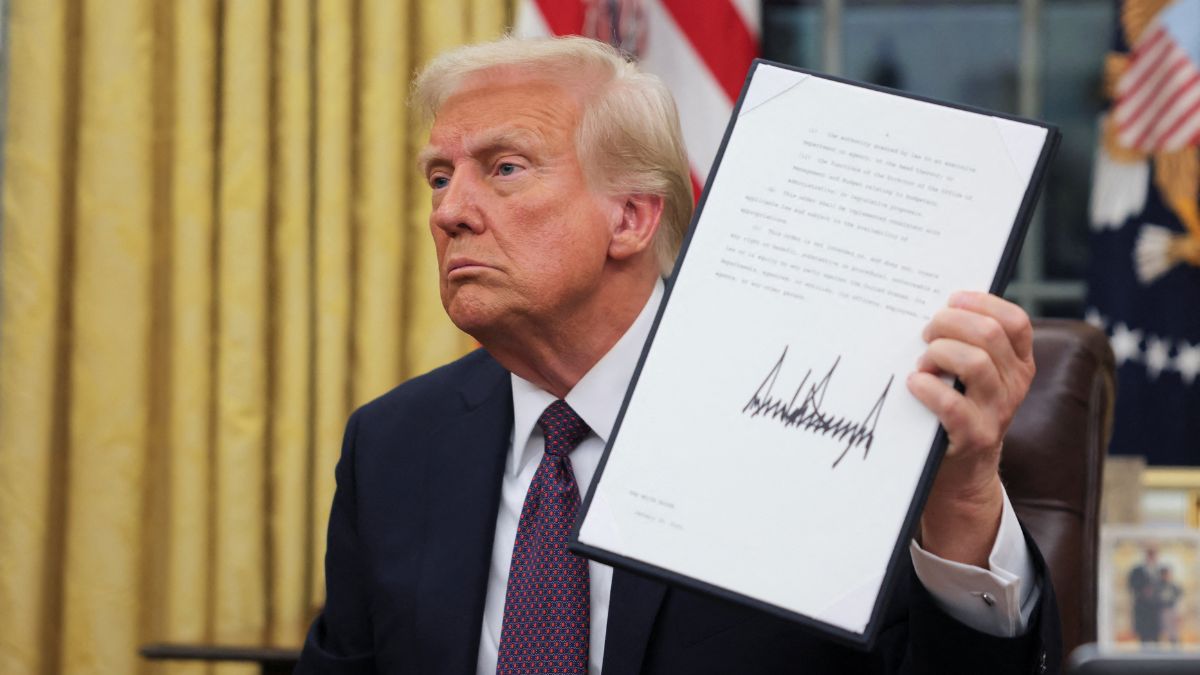Canada and Mexico are not alone in facing the wrath of US President Donald Trump’s tariff actions. Earlier this week, the president announced fresh tariff measures for the European Union and China, which some experts think could trigger a trade war.
Trump has long been threatening to impose a 25 per cent tariff on imports from Canada and Mexico until they clamped down on drugs, particularly fentanyl, and migrants crossing the border, in a move that would appear to violate a free-trade deal.
On Monday, Trump signed a broad trade memorandum ordering federal agencies to complete comprehensive reviews of a range of trade issues by April 1.
These include analyses of persistent US trade deficits, unfair trade practices and currency manipulation among partner countries, including China.
Trump’s memo asked for recommendations on remedies, including a “global supplemental tariff,” and changes to the $800 de minimis duty-free exemption for low-value shipments often blamed for illicit imports of fentanyl precursor chemicals.
China
As part of a slew of executive orders that Trump has been signing since his induction in office, the president announced that the US will be imposing a 10 per cent tariff on Chinese imports starting as soon as February 1.
“We’re talking about a tariff of 10% on China based on the fact that they’re sending fentanyl to Mexico and Canada,” Trump said.
On Wednesday, new tariff threats impacted several Chinese stocks, including the CSI 300 and Hong Kong’s Hang Seng indexes, while China’s renminbi slipped 0.3 per cent against the dollar.
Impact Shorts
More ShortsChina said it was willing to maintain communication with the US to “properly handle differences and expand mutually beneficial cooperation”.
“We always believe that there is no winner in a trade war or tariff war. China will always firmly safeguard its national interests,” foreign ministry spokesperson Mao Ning told reporters at a regular press briefing.
EU
The European Union has also been threatened with new tariff measures in response to the growing trade deficit between Europe and the US.
“The European Union is very, very bad to us,” he said, repeating comments made Monday. “So they’re going to be in for tariffs. It’s the only way … you’re going to get fairness.”
European Central Bank President Christine Lagarde cautioned CNBC that Europe must be “prepared” for Trump’s tariff threats.
“What we need to do here in Europe is to be prepared, and anticipate what will happen in order to respond,” she said.
Mexico
Last week, Mexico’s new President, Claudia Sheinbaum, met with Canadian businessmen to discuss ways of strengthening business, trade, and investments between the two countries and oppose the US tariff measures.
The meeting is the first sign that Mexico and Canada are taking steps to defend the United States-Mexico-Canada Agreement (USMCA), which is due for review in June 2026. Trump has cast doubts over the agreement’s viability.
As Trump prepares to take office, Sheinbaum has publicly sparred with the incoming U.S. president, but also shown concrete results that could help show Mexico is serious about cooperating on migration, security and China.
Canada
Canada has unveiled a range of measures to strengthen border security, including increasing personnel and enhancing technology. On Wednesday, the government announced the deployment of Blackhawk helicopters and additional drones to enhance surveillance along the shared border.
Trudeau has said that Canada will pursue an eye-for-eye approach to mitigate the effects of Washington’s aggressive economic moves against Ottawa. These measures would see Canada impose tariffs on hundreds of billions of dollars’ worth of goods exported to the United States.
With inputs from agencies


)

)
)
)
)
)
)
)
)



